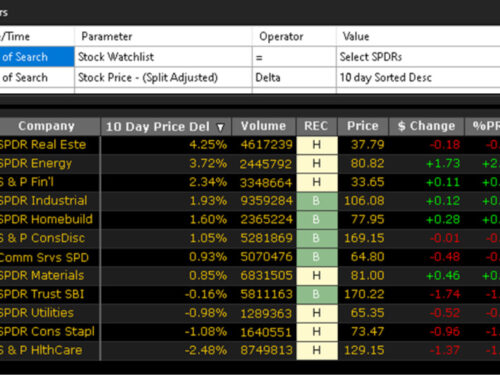BUY, HOLD AND HOPE INVESTING?
Written by: Robert and Russell Markham
If you are worried about the impacts on your portfolio earnings as a result of possible policy changes, there has never been a better time to ensure you are finding the best dividend paying stocks AND getting top capital growth.
A lot of investors buy, hold and hope. Holding onto top dividend paying stocks along with the franking credits seems to be the main reason for this type of strategy. However, as we have seen over the years, timing shares like Telstra and BHP would have resulted in much better returns rather than the buy and hold and hope approach. You do not need to hold on at all costs to lock in the dividends and franking credits, there are other options to consider. It should come down to buying shares for dividends and capital growth. You can achieve strong capital growth with a reasonable dividend yield without having to buy, hold and hope. To demonstrate, I have created 2 scenarios to consider:
Scenario 1: You have purchased shares and earned 5% in dividends for the year and held the shares since the 5% dividend earnings were most important to you. Overall you made -3% in capital returns as a result of some market volatility where your portfolio went up and down during the year and ended slightly down.
Scenario 2: You purchased shares, but only earned 2% in dividends since you had sold out some shares when the market was in a downturn and which meant forgoing some of the dividends on offer. However, you bought back in when the market resumed its trend back up and you were rewarded with capital appreciation. As a result, you ended the year with 12% in capital growth. This approach entailed a bit more work (you had to do 8 trades for the year).
Which scenario would you prefer? Scenario 1? One may argue that scenario 1 is fine since all that you were after was the dividends. Fair enough, but what happens when you have a year when the dividend on offer might not be so lucrative? What about those Franking Credit rules possibly changing? What if the market has a big fall and you are in that buy and hold approach? And what if you needed some extra money in an emergency? For scenario 1, you have no capital gains to draw upon that year, so looks like you could be forced to sell down some of your principal that you rely upon for your returns in case of an emergency!
What about Scenario 2? I hear you say that 2% in dividends is not going to cut it? OK, but what about those 12% returns you have made? How about selling half your capital growth and locking in a further 6%? So, you lock in 8% returns for the year and you have built your capital up a further 6%. Do you prefer this approach more?
You see where I am going with this…with just a little bit of extra work you can get the returns you are after and you will make up significantly more for the potential loss in franking credits and dividends through capital growth!
This leads me to the next question. Are you looking to achieve both capital growth and income? You may wish to have a look at the 4 Steady Dividend Payers WatchList per the Special WatchLists group under WatchLists in the Viewers tab in VectorVest. There you will find 4 stocks that have collectively returned over 20% a year along with over 4% Dividend Yield (over the last 5 years). With the elections now over, all the more reason to to seek capital growth, dividends and franking credits.
My question to you this week: Are you going to be a buy, hold and hope investor, or are you going to do a little bit of work and become a smart investor, an investor who locks in capital gains while taking in dividends?








Leave A Comment